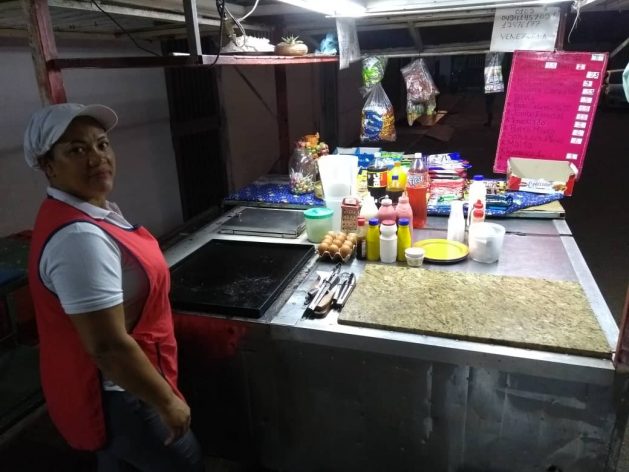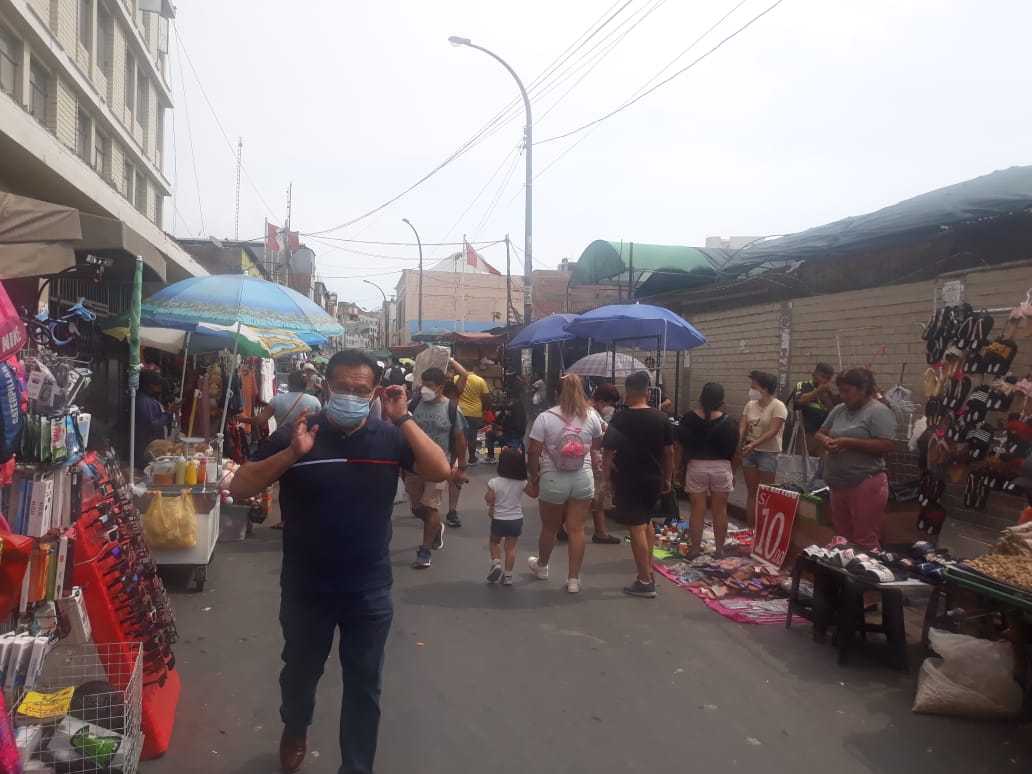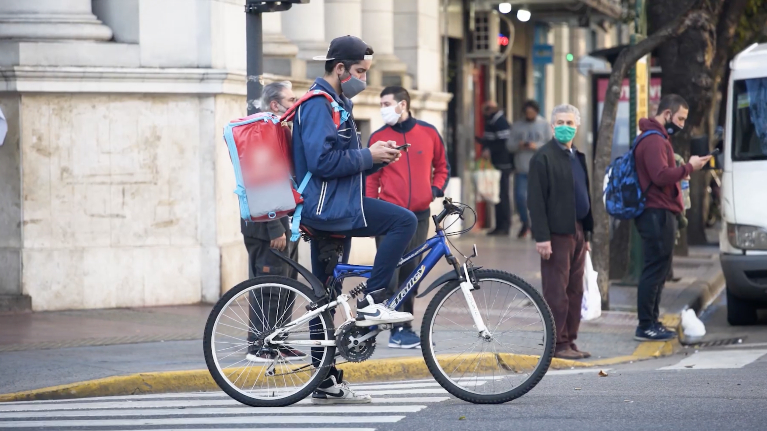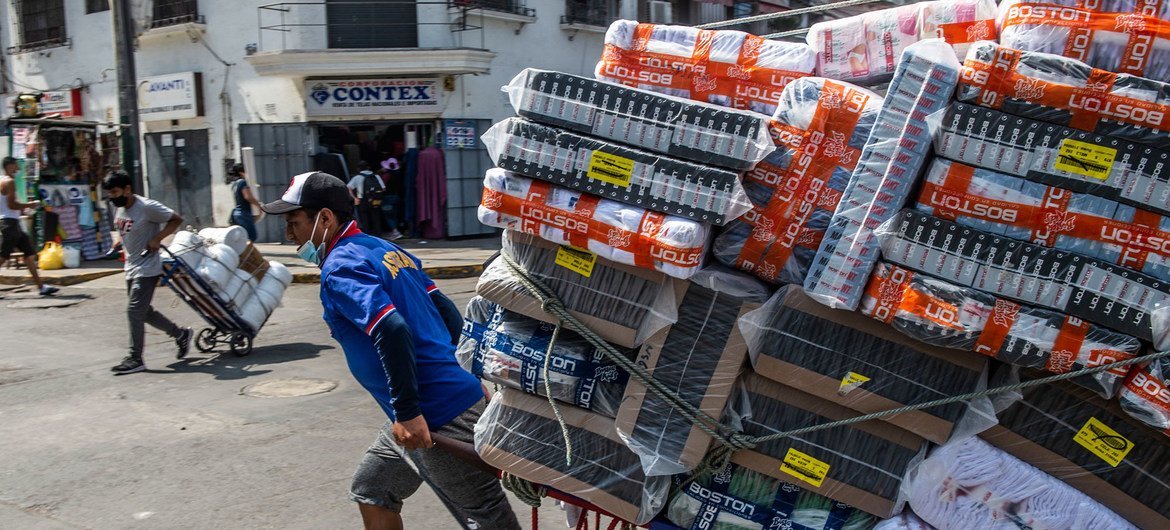[ad_1]

CARACAS, Mar 18 (IPS) – Doris Martínez was a prepare dinner in a Venezuelan restaurant that closed its doorways; she emigrated to Colombia, acquired sick from working lengthy hours standing in entrance of a range, and returned to her nation the place, collectively along with her husband and kids, she runs a busy quick meals kiosk on a highway in Valles del Tuy, close to the Venezuelan capital.
Johnny Paredes of Peru was a safety guard and worker of a restaurant in Lima till he determined to grow to be a self-employed road vendor promoting fancy garments within the mornings and meals and drinks within the afternoons within the upscale neighborhood of Miraflores.
Mexican laptop technician Jorge de la Teja works for much longer hours in Mexico Metropolis than at his former job in a service firm, however with pressured telework growing as a result of COVID-19 pandemic, his shoppers and revenue have grown over the previous two years.
In Latin America and the Caribbean, 140 million employees (51 % of all employed folks) work within the casual sector and have been strongly impacted by the pandemic. However, typically engaged on the streets, they take the heart beat of the disaster and tackle new duties or ventures to assist their households.
For the reason that pandemic broke out in March 2020, 49.6 million jobs, each formal and casual, have been misplaced within the area, 23.6 million of which had been held by ladies, in response to information from the Worldwide Labor Group’s (ILO) newest labor overview, revealed in February.
Informality “continues to be one of the vital necessary traits of the area’s labor markets,” Roxana Maurizio, an Argentine labor economics specialist with the ILO, advised IPS from the company’s regional headquarters in Lima.
Research by the Financial Fee for Latin America and the Caribbean (ECLAC) have proven that of the 51 % of casual employees, as much as 37 % work within the casual sector of the financial system, greater than 10 % within the formal sector and 4 % in households.
In apply, one out of each two employed individuals within the area is in casual employment, in response to the ILO, and one third is self-employed, in response to ECLAC.
The ILO considers casual employment to be all paid work (each self-employment and salaried employment) that’s not registered, regulated or protected by authorized or regulatory frameworks. For the employees who carry out it, it provides, remuneration relies upon immediately on the advantages derived from the products or providers produced.

Faces behind the numbers
Paredes, 46, advised IPS from Lima that “in my case it labored out higher, due to the independence of getting my very own schedule and having the ability to shorten or lengthen it relying on how the workday seems, and since on the road I earn between 25 and 35 {dollars} a day, double what I used to be paid in my earlier jobs.”
De la Teja, 37, agrees and explains that in Mexico Metropolis he helps his household “comfortably, with regard to meals and different day-to-day bills, as a result of I earn greater than 2,000 {dollars} a month. However additional bills, corresponding to insurance coverage, or touring for trip, are troublesome.”
Martinez, a 50-year-old mom of two sons and three daughters and grandmother of three, works as a home and caregiver within the mornings and within the afternoons she helps run the household kiosk, the “Doris Burger”, along with her husband and two sons.
On the kiosk she earns “about 30 or 35 {dollars} a day from Monday to Friday, and as much as 50 on weekends. Way more than within the jobs I’ve had standing in entrance of a range since I used to be younger, and it’s additionally higher as a result of it brings in cash for a number of family members.”
The scenario is totally different for Wilmer Rosales, a 39-year-old “todero” or jack of all trades in Barquisimeto, a metropolis 350 kilometers west of Caracas, who mentioned that “right here within the inside (of the nation) there may be nearly nothing to do and when there may be, the pay could be very low – two, three, or 5 {dollars} for a day’s work, on the most.”

Restoration with fewer jobs
In its February report, the ILO confirmed that the area’s 6.2 % financial development in 2021 was inadequate for the labor market to get well, and the regional unemployment price stood at 9.6 %.
Of the 49 million jobs that had been misplaced on the peak of the disaster, within the second quarter of 2020, 4.5 million have but to be recovered, the overwhelming majority of them jobs beforehand held by ladies. And in whole there are some 28 million folks searching for work.
After the onset of the pandemic, the disaster manifested atypically and as a substitute of affecting extra formal occupations, there was a better lack of casual jobs, leaving tens of millions of individuals with out an revenue.
In Argentina, Mexico and Paraguay, for instance, the discount in casual sector jobs accounted for greater than 75 % of the autumn in whole employment in the course of the first half of 2020. In Costa Rica and Peru the proportion was considerably decrease, 70 %, whereas in Brazil and Chile it was round 50 %.
The scenario has now been reversed, and the international locations with accessible information point out that between 60 and 80 % of the roles recovered as much as the third quarter of 2021 had been within the casual sector.
Among the many components favoring restoration of the casual sector are the destruction of formal sector jobs as a result of pandemic, the better ease of interrupting an off-the-cuff salaried relationship, its better incidence in small companies and enterprises, as within the case of Martinez, and the impossibility of many casual employees to do telework.
Girls are lagging behind on this restoration, resulting from their better presence in sectors strongly affected by the disaster which might be rallying slowly, corresponding to inns and eating places. In extremely feminized sectors, corresponding to home service work, the speed of informality exceeds 80 %.
Neither is informality benign to younger folks, who face better labor market intermittency, defined partly by the extreme inflows and outflows of the labor drive; and better labor instability is related to their prevalence in casual, precarious, low-skilled actions.

Go away nobody behind, particularly ladies
In opposition to this backdrop, informality represents a problem to the necessity and proposals within the area to provide, on the tempo of the pandemic and as a option to overcome it, a sustainable and inclusive restoration, “leaving nobody behind”, because the mantra already embedded within the discourse of assorted worldwide organizations goes.
Maurizio is clearly dedicated to the formalization of employment. “At present, greater than ever, the restoration must be people-centered; specifically, the creation of extra and higher jobs, formal jobs,” she mentioned.
Informality “continues to be one of the vital necessary traits of the area’s labor markets. Financial and social restoration is not going to be attainable until important progress is made in decreasing its incidence,” mentioned the ILO specialist.
A needed situation is “to advance in a technique of financial development with stability, reconstruction of the productive equipment and chronic enhancements in productiveness.”
There have to be, in response to the skilled, “a selected deal with the digital transition and younger folks; strengthening of labor establishments corresponding to, for instance, the minimal wage; care insurance policies that permit ladies to return to and stay within the labor market; and assist for small and medium-sized enterprises.”
Maurizio additionally referred to as for the extension of unemployment insurance coverage, social safety insurance policies and “revenue ensures for the inhabitants that continues to be strongly affected by the disaster.”
The gender perspective takes on “a central relevance within the restoration, taking into consideration the truth that of the 4.5 million jobs nonetheless to be recovered, 4.2 million are in historically feminine occupations.”
Amongst different measures, it’s essential to “facilitate the return of girls to the labor market by way of a coverage of funding in complete care providers with better protection, which on the identical time ought to be a supply of formal employment. Additionally, to assist the restoration of financial sectors with a excessive feminine presence.”

Unions for a brand new working class
On the planet of the commerce unions, Brazilian Rafael Freire, secretary common of the Commerce Union Confederation of the Americas (TUCA), added the problem of “having a commerce union for right now’s working class, which largely is precarious, outsourced, or working from functions.”
This workforce, “with out job contracts, is more and more a part of the casual sector, in massive proportions, for instance 70 % in Honduras and 80 % in Guatemala,” mentioned the chief of the 55 million-member central commerce union from its headquarters in Montevideo.
Informality, which is structural within the Latin American social and labor panorama, is a significant hurdle for financial restoration and social justice within the area, and whereas governments design methods, outline insurance policies and take measures, tens of millions of casual employees depend on their resilience to carry house meals for his or her households.
© Inter Press Service (2022) — All Rights ReservedAuthentic supply: Inter Press Service
[ad_2]
Source_link




